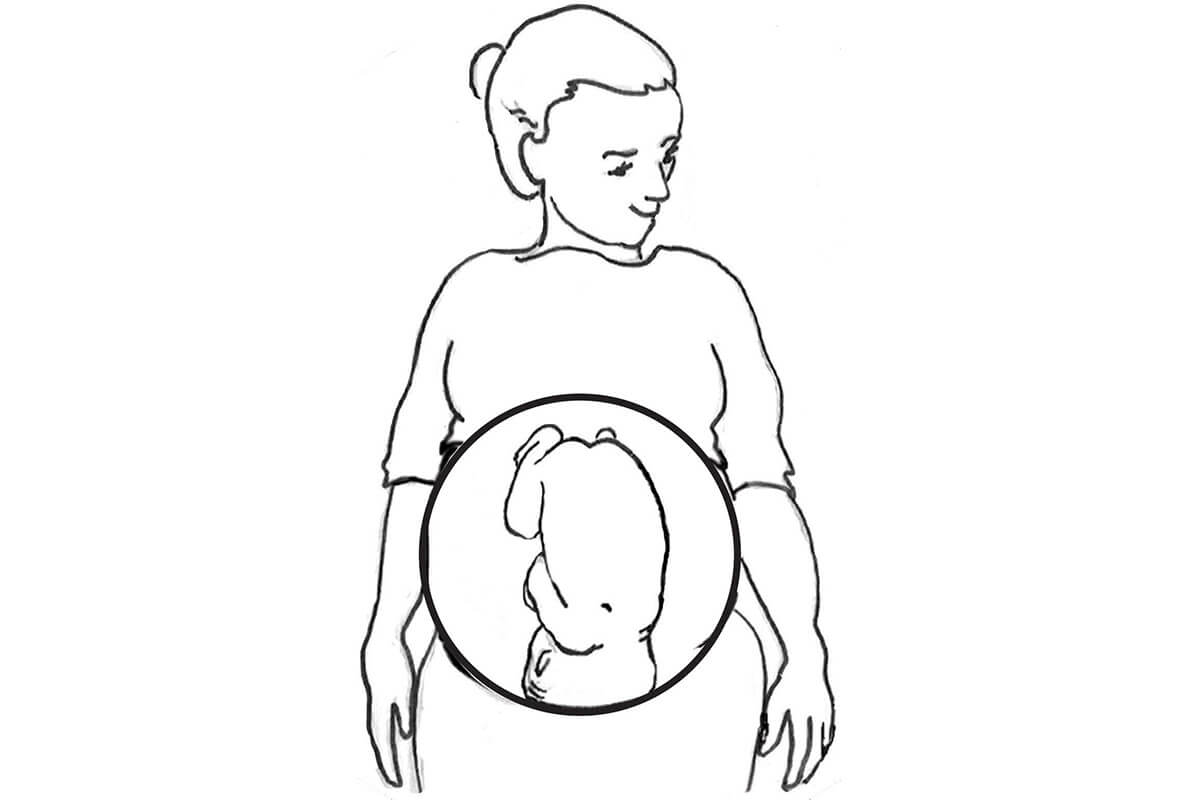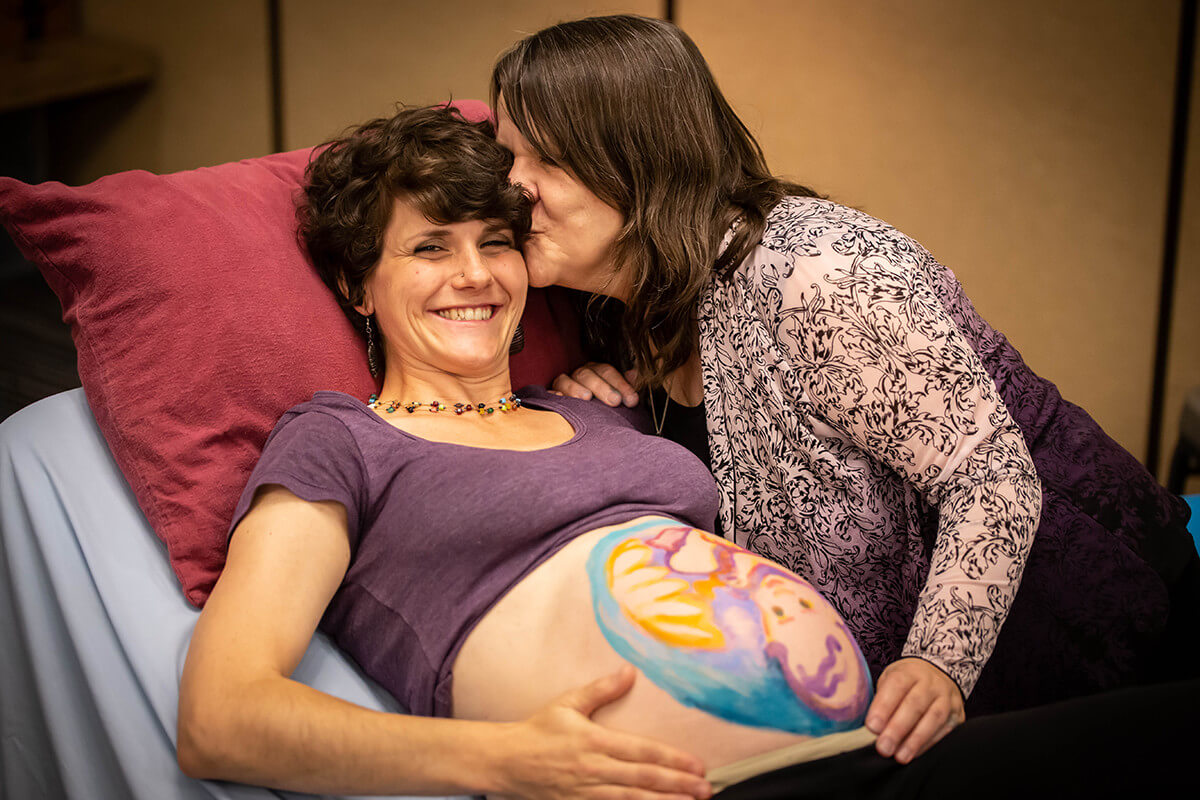“Is it necessary to do Spinning Babies® (The Three Balances℠, Daily Activities) if the baby is head down and no indication that will change? LOA at 32 weeks now.”
I rarely use the word necessary. Breathing is necessary, so is drinking water and eating food. I’ve come to believe touch and love are necessary, too, but mainly to reach a quality of life I set for myself. So, in answering the question, Are the Three Balances℠ necessary when baby is head down? I will say doing body balancing with a head down baby is about quality of life, and ease in birth. And now that I’ve gently said that no, adding or maintaining body balancing isn’t necessary but rather optimal, now I will ask some practical questions to create a counterbalance to the idea that a passive wait-and-see approach is closer to nature than intentional birth preparation, a common myth.

Baby is in the Left Occiput Anterior position
Your Baby Is Left Occiput Anterior Now
Left Occiput Anterior is not the most usual at 32 weeks, though highly diagnosed as a position. Left Occiput Transverse is more typical but if you have a triangle (android) shaped uterus, LOA is great and the position you are going for! If you have the more common round (gynecoid) pelvic brim which is actually wider side-to-side, LOT is typical. Both are ideal in a gynecoid pelvis, just much more likely to be LOT. Any position in which baby’s occiput in on the left is ideal, really, and posterior only slightly less ideal due to the flexion of baby’s head, as long as baby can rotate with contractions which is likely but not absolute. LOA now doesn’t always tell us about the pelvic floor, if I may get really down into the details. Babies sometimes turn posterior at 38 weeks as they lower towards ligaments they find further down in the uterus nearer the cervix. Anterior pelvic tilts are nice for lengthening the pelvic floor and helping baby remain anterior, but so are other activities for other muscles affecting the pelvis. It’s like oiling a hinge on a big door. It can open, but is it nice for the door to open without a grating sound or squeak? Nice but probably not necessary. Necessity is too strong a word. Yet, let’s get into the less common outcomes, though not at all rare in my next question: How important is a vaginal birth?
How Important Is Reducing the Chance of Interventions?
Is it more OK to do the techniques and not have to have needed them, your birth goes well anyway, than to have not done them even if the birth has more pain, more time, or needs a ventouse, epidural or cesarean? And another important concern to be aware of is if it is playing in the back of your mind, is it OK to try something even if it doesn’t work for you and you have a painful birth or a cesarean? If you are birthing in a hospital, you are entering a setting where 1 in 4 women do have a surgical birth but perhaps 1 or 2 in every 50 really need one? Would a more balanced pelvis help reduce the chance of a long, slow labor? If the average version of pelvic tension is hidden in the pelvis, then body balancing will help! In other words, is it OK to do activities and stretches, sit on your sitz bones, and expand your ribs with luscious nice breaths even though you may not have needed to do that to have a vaginal birth?
“Head Down Is Half the Story.”
Not all head-down babies find the same ease in tucking their chins and rotating through small spaces in the pelvis since not all of their mother’s pelvises are lined with muscles and fascia that are supple and equal in the tensions that hold the uterus in balance. Some of us have twists in a muscle or ligament, some have shortened pelvic floors or loose abs (or tight abs), and other various issues. That’s why we say “Balance First.” We list the specific reasons in our website pages on each position and technique. Pour a cup of tea and feel invited to our free information to prepare for easier birth. Please let me know YOUR decision and how things go for you. You are the “Mama!” You get to choose!
Featured image credit: Kristin Tangen Photography

